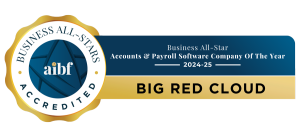Look ahead with confidence
Uncertainty around cash collection makes planning ahead difficult for many small firms. Fortunately, there are steps businesses can take to improve the accuracy of their short and long term financial predictions.
Financial forecasts are undertaken for a variety of purposes. Some companies use them to assess future funding needs, while others may be focused on short term cash management. Those that do a lot of business outside the eurozone may rely on forecasts to calculate their likely foreign exchange requirements and whether they need to hedge some or all of that exposure.
Efficient cash management has never been more important. In previous blogs we have talked about the importance of planning ahead and financial forecasts play an important role in helping businesses determine whether they are likely to require additional funds down the line.
Regular review required
Most business processes benefit from regular review and financial forecasts are no exception. If the firm has gone through any significant change in terms of its customer base and/or suppliers, the metrics used to make the calculation will need to be reviewed to ensure they are still relevant.
Looking at past performance is the best way to improve the accuracy of current and future predictions. Comparing how the business actually performed with how it was predicted to perform makes it relatively easy to identify the factors that make the greatest contribution to accuracy as well as those that have accounted for past variances.
This is important because business owners and financial directors are increasingly using forecasting tools to make decisions about their company’s future direction.
Knowing what’s important
Another major factor in improving the accuracy of financial forecasts is the ability to identify the impact of one-off issues, such as an unexpectedly late payment from a major customer or a contract falling through at the last minute.
Accuracy is important when it comes to cash flow, but perfection can be less important than consistency. There is no point in creating forecasts that are almost completely accurate for a couple of months if that accuracy falls dramatically at other times of the year.
Realistic predictions of cash flow enable businesses to maintain lower cash buffers, meaning more cash will be available to either invest in the business or pay down more expensive debts.
Technology not everything
Technology has made it easier for even the smallest company to produce good quality financial forecasts. Using a cloud-based accounting solution such as Big Red Cloud allows businesses to keep tabs on cash balances and even get an insight into payment patterns.
However, forecasting also requires human input to make sure the end result reflects the potential impact of new revenue lines or changes in the way customers pay their invoices, such as different payment dates or less frequent payment runs.
Used correctly, financial forecasts are also a valuable tool for identifying business trends early. As the saying goes, forewarned is forearmed.
Try Big Red Cloud cloud-based accounting software for free!




